Link
Aired on June 25, 2016, Phil Schaap hosts this episode of Traditions of Swing on WKCR 89.9 FM NY, dedicated solely to Frank Teschemacher in which many of the original 78rm records are played.
5 notes
·
View notes
Quote
Tesch was also a genius but had a calculated manner of playing. He was an intellectual compared to others. He knew the value of each note he hit, and he knew why he played them.
pianist Richard “Dick” Voynow
1 note
·
View note
Link
‘Like’ Teschology on Facebook!
4 notes
·
View notes
Photo
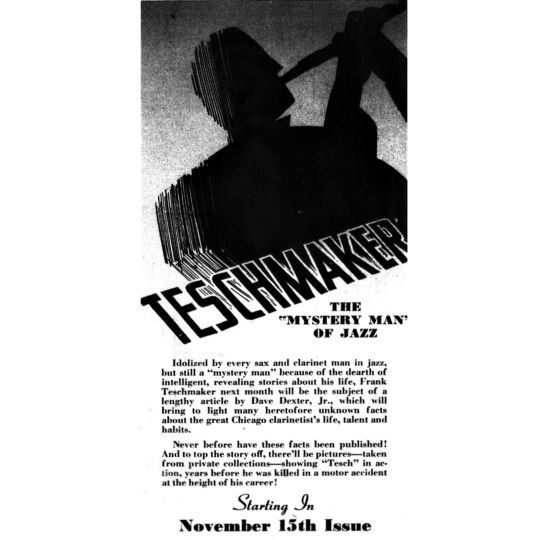
An announcement found in the November 1, 1939 issue of Down Beat magazine for Dave Dexter Jr.’s three articles on Frank Teschemacher’s life and career found in the following three issues.
4 notes
·
View notes
Photo

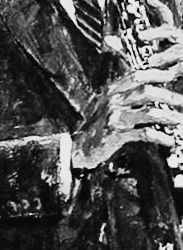


Happy birthday, Frank Teschemacher | March 13, 1906 -- March 1, 1932
Teschemacher [...] epitomized the spirit of Chicago jazz. He played with wild swoops and headlong daring that led him into theoretically wrong notes that he turned into triumphs.
-- John S. Wilson
5 notes
·
View notes
Photo
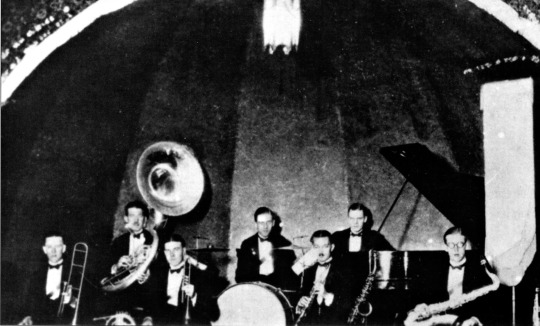

Frank Teschemacher with the White City Orchestra
(Source: Destination Chicago Jazz by Sandor Demlinger and John Steiner, Chuck Sullivan collection)
6 notes
·
View notes
Video
youtube
In the 1932 film Scarface, it has been suggested that the clarinetist on the soundtrack of the nightclub sequence (which starts at 1:10 on this video) is Frank Teschemacher. The band on the soundtrack in this sequence has been listed as Frank Snyder’s Rhythm Kings with a lineup as follows: Carl Rinker on cornet, Teschemacher on clarinet, Tut Soper on piano, and Frank Snyder on drums. (Other accounts have alternately suggested that Bud Jacobson is the clarinet player.)
Though the film was almost exclusively filmed in Hollywood, CA, it’s very plausible that the filmmakers sought out an authentic Chicago band to record for the soundtrack. And even though the film was released after Tesch’s death, the film was mainly filmed in 1930 and 1931.
The clarinet can be more prominently heard around 2:26 and is most clearly heard at around 3:08. The phrasing, tone, and overall style of clarinet playing does indeed strongly suggest that Frank Teschemacher is the clarinet player in question.
3 notes
·
View notes
Link
A 1961 interview with Edwin “Squirrel” Ashcraft, conducted by John Steiner. Ashcraft was a close friend/associate of the “Chicagoans”, including Frank Teschemacher. Teschemacher is mentioned many times throughout the interview.
via Tulane University’s Music Rising archive
#Squirrel Ashcraft#Frank Teschemacher#Austin High Gang#The Chicagoans#jazz history#Tulane University#interview#1960s
0 notes
Video
youtube
Wailing Blues (Take A) | The Cellar Boys
Frank Teschemacher on clarinet, Wingy Manone on cornet, Bud Freeman on tenor saxophone, Frank Melrose on piano, George Wettling on drums and a mysterious accordion player (see the comments on this blog post for further info)
Recorded for Brunswick in Chicago on January 24, 1930.
Manone’s trumpet reintroduces the minor theme and then Teschemacher is onstage solo for 16 furious, incandescent bars that cut probingly through the stodgy piano and accordion background. These are wailing blues indeed, delivered with great feeling and no attempt whatsoever at suavity. Freeman spells the clarinetist at the bridge and winds up his deliberate solo with a challenging double-time break. Teschemacher ripostes with a dazzling string of double-time runs, a breathtaking exhibition of inspiration and control.
-- Liner notes from the Giants of Jazz: Frank Teschemacher LP box set, written by Marty Grosz
#1930s#jazz#Frank Teschemacher#Bud Freeman#Wingy Manone#George Wettling#Frank Melrose#The Cellar Boys#music#Tesch's music
10 notes
·
View notes
Audio
Isn’t There A Little Love? | Wingy Manone & his Club Royale Orchestra
Frank Teschemacher on clarinet, Wingy Manone on cornet and vocals, George Snurpus on tenor saxophone, Art Hodes on piano, Ray Biondi on guitar, and Augie Schellange on drums.
Recorded for Brunswick on December 17, 1928 in Chicago.
(Note: The audio will play on the Teschology webpage, but not on the Tumblr dashboard because the mp3 file is hosted on a different website.)
#1920s#jazz#Frank Teschemacher#Wingy Manone#Wingy Manone and his Club Royale Orchestra#Art Hodes#George Snurpus#Ray Biondi#Augie Schellange#music#Tesch's music
1 note
·
View note
Audio
Wailing Blues (Take B) | The Cellar Boys
Frank Teschemacher on clarinet, Wingy Manone on cornet, Bud Freeman on tenor saxophone, Frank Melrose on piano, George Wettling on drums and a mysterious accordion player (see the comments on this blog post for further info)
Recorded for Brunswick in Chicago on January 24, 1930.
(Note: The audio will play on the Teschology webpage, but not on the Tumblr dashboard because the mp3 file is hosted on a different website.)
#1930s#Frank Teschemacher#Wingy Manone#Bud Freeman#George Wettling#Frank Melrose#The Cellar Boys#music#Tesch's music
5 notes
·
View notes
Photo

Muggsy, Tesch, & The Chicagoans record cover – 1953 Riverside Records
14 notes
·
View notes
Note
Hi, I was wondering if I could use the (black/white) picture of the Austin High Gang in my Wiki page. Since the photograph is so old, I figured the copyright may have expired, so I would like your permission to use it.
Truthfully I have no idea if there is any copyright on it and who would have the rights to it so I don’t know if it’s really my place to give permission for it? But if so, it’s fine by me.
0 notes
Photo
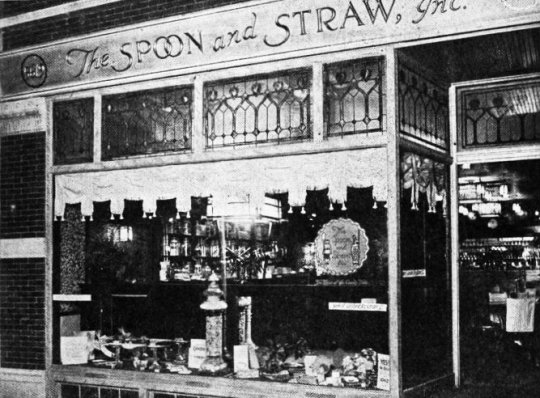
The Spoon and the Straw in Austin, IL, c. 1920
It was at this ice-cream parlor that the “Austin High Gang” boys convened and eventually heard the records that would inspire them to become devoted to jazz.
“Every day after school, Frank Teschemacher and Bud Freeman, Jim Lanigan, my brother Dick, myself, and a few others used to go to a little place called The Spoon and Straw. It was just an ice-cream parlor where you’d get a malted milk, soda, shakes, and all that stuff. But they had a Victrola there, and we used to sit around listening to the bunch of records laid on the table. They were Paul Whiteman and Art Hickman records and so forth. And Ted Lewis, he was supposed to be the hot thing but he didn’t do anything to us somehow.
This went along for two or three months: we’d go in there every day, and one day they had some new Gennett records on the table and we put them on. They were by the New Orleans Rhythm Kings and I believe the first tune we played was Farewell Blues. Boy, when we heard that -- I’ll tell you we went out of our mind. Everybody flipped. It was wonderful. So we put the others on, Tiger Rag, Discontented, Tin Roof Blues, Bugle Call and such titles. We stayed there from about three in the afternoon until eight at night, just listening to those records one after another, over and over again. Right then and there we decided we would get a band and try to play like these guys.”
-- Jimmy McPartland
#The Spoon and Straw#1920s#jazz history#Austin High Gang#Frank Teschemacher#Bud Freeman#Jim Lanigan#Dick McPartland#Jimmy McPartland#Austin#Illinois
11 notes
·
View notes
Photo
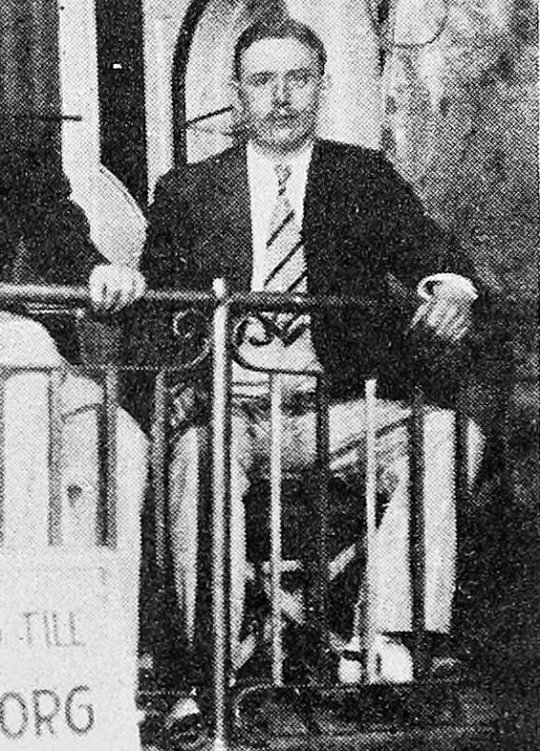
Close-up of jazz musician Frank Teschemacher in this 1929 observation car photo (where he posed alongside Jess Stacy, George Wettling, and Wettling's wife)
2 notes
·
View notes
Photo
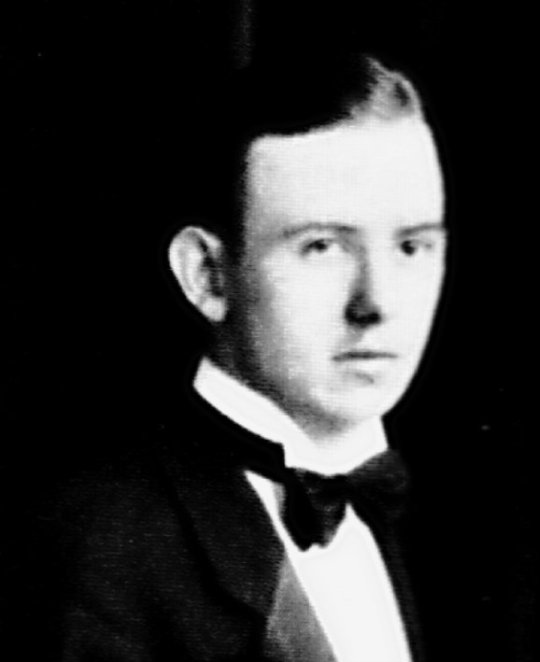
Close-up of Frank Teschemacher in the Floyd Town’s Midway Gardens Orchestra photo, 1927.
5 notes
·
View notes
Audio
Nobody’s Sweetheart | Charles Pierce & His Orchestra
Muggsy Spanier on cornet, Jack Reid on trombone, Frank Teschemacher on clarinet and alto saxophone, Charles Pierce on alto saxophone, Ralph Rudder on tenor saxophone, Dan Lipscomb on piano, Stuart Branch on banjo, Johnny Mueller on brass bass and string bass, and Paul Kettler on drums.
Recorded for Paramount in April 1928 in Chicago.
#Charles Pierce and His Orchestra#Frank Teschemacher#Muggsy Spanier#1920s#jazz#Jack Reid#Charles Pierce#Ralph Rudder#Dan Lipscomb#Stuart Branch#Johnny Mueller#Paul Kettler#Tesch's music
8 notes
·
View notes